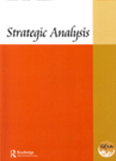‘Strategising’ the India-EU Partnership
India’s foreign policy, as in the case of any other sovereign state, aims at protecting and promoting the country’s ‘national interest.’ Strategic autonomy, which has been its defining value and goal, remains at the core of India’s global engagements. India maintains political, diplomatic, economic, strategic, science and technological, and cultural relations to achieve a stable, secure, peaceful, and prosperous India. The largest ‘democracy’ in the world, India, joins hands with the EU, the largest cluster of ‘democracies’ in the world.
- Manoj Babu Buraga |
- November 2022 |
- Strategic Analysis




